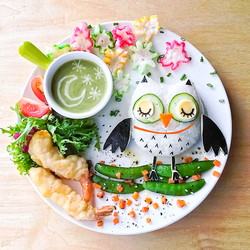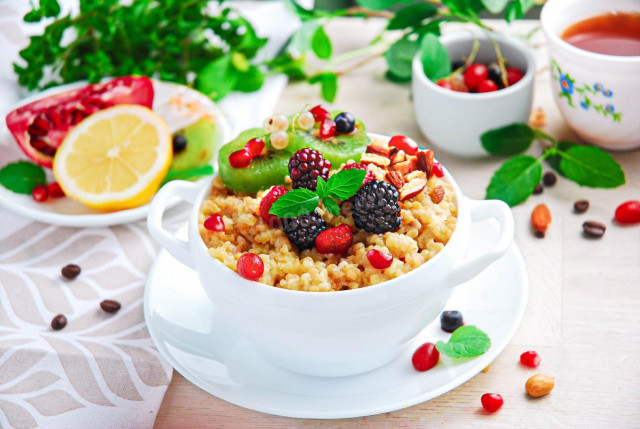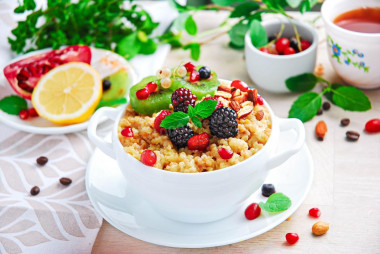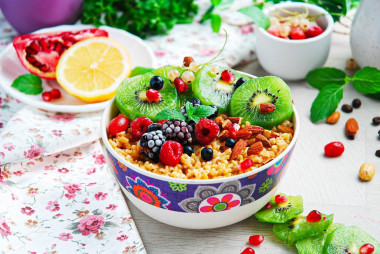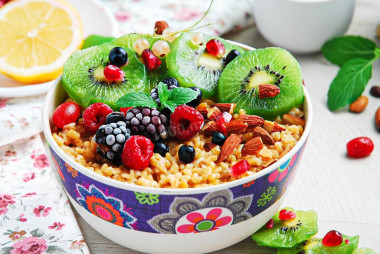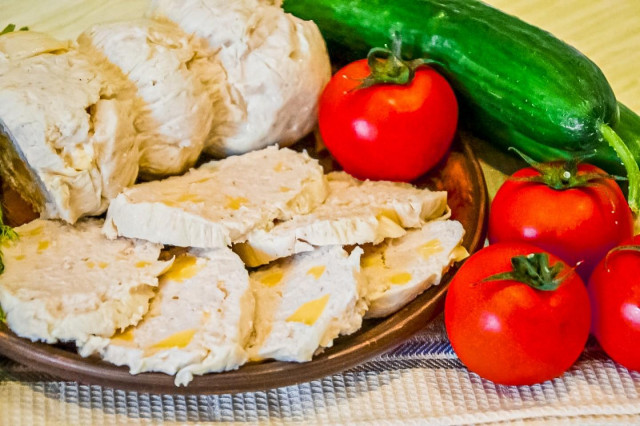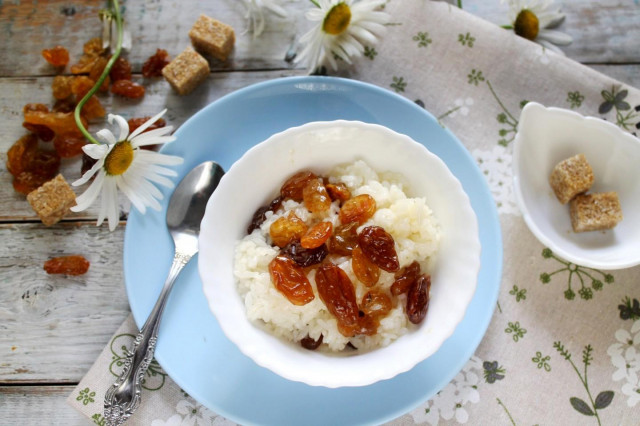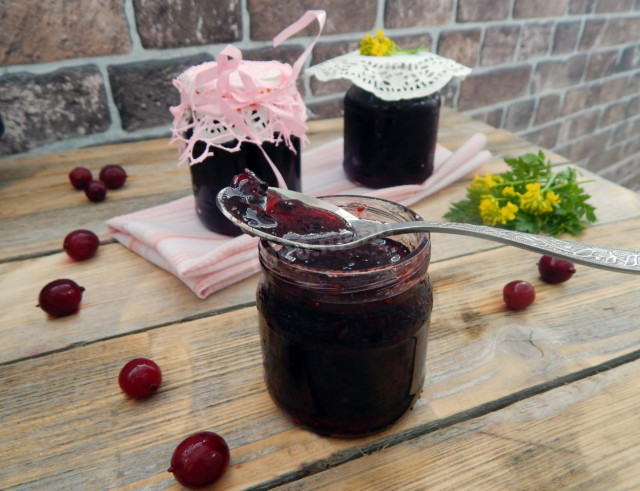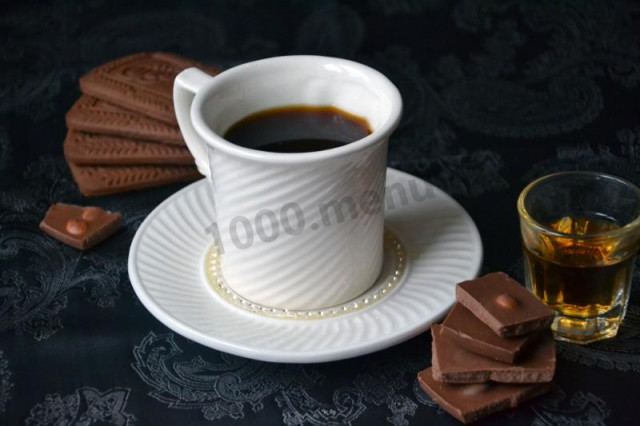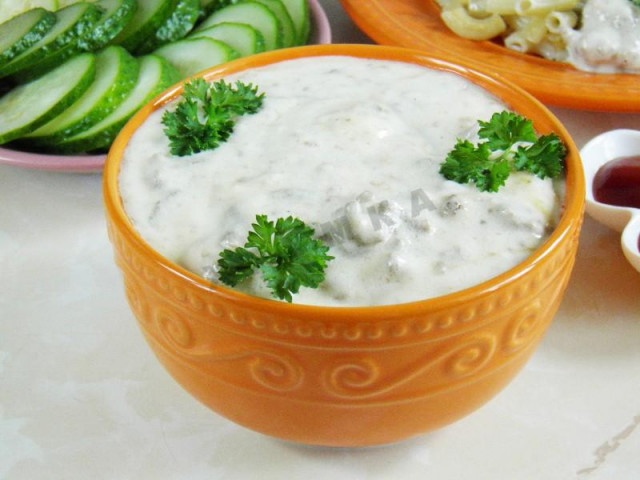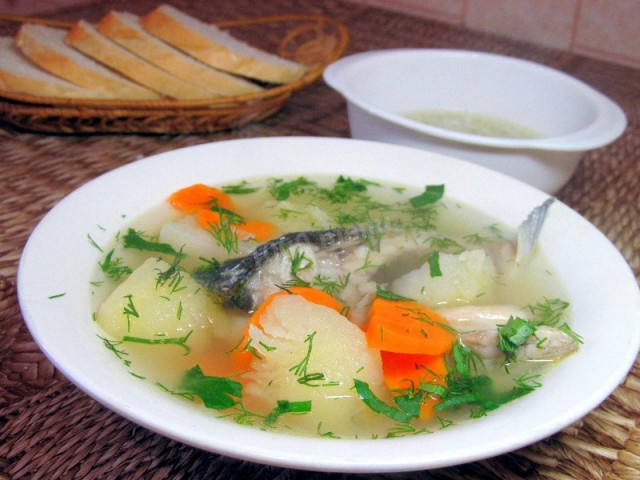Composition / ingredients
Step-by-step cooking
Step 1:
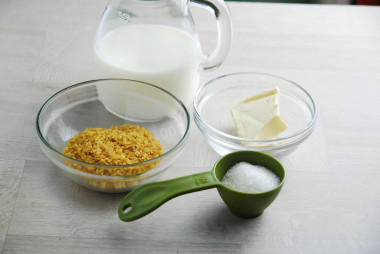
How to cook bulgur porridge? Prepare all ingredients. You can decide for yourself whether to wash the cereal or not. In some sources, it is still recommended to rinse, in many articles this stage is skipped. I think it would be right, perhaps, to rinse the bulgur and then dry it with paper towels from excess moisture to restore its friability. I washed the bulgur under running cool water 2-3 times until the water became transparent.
Step 2:
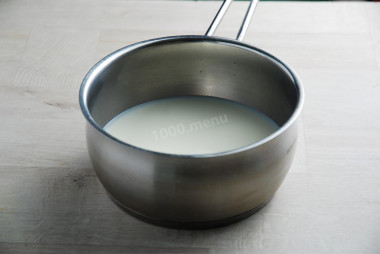
Take a pot with a thick bottom. Pour the milk into it, put it on medium heat and bring to a boil.
Step 3:
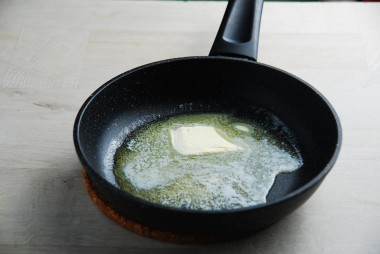
While the milk is heating up, melt the butter in a hot frying pan.
Step 4:
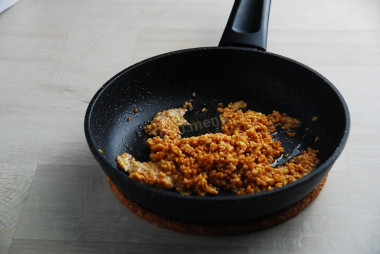
Pour the bulgur into the butter and mix. Fry the bulgur on low heat until brown and slightly nutty flavor (about 4 minutes). Stir with a spatula so that the grits are evenly fried and not burnt.
Step 5:
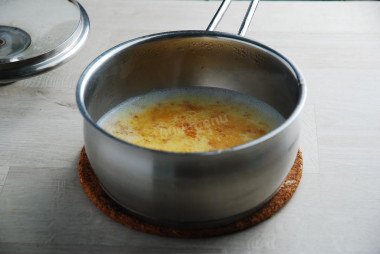
Now pour the fried bulgur into the milk, mix. Add salt and sugar to taste, stir. Instead of white sugar, you can use brown cane sugar, which will give the taste of porridge a pleasant caramel notes. Cook the porridge for 20 minutes over low heat, stirring occasionally.
Step 6:
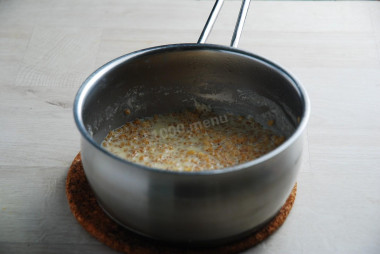
When the bulgur becomes soft, turn off the fire. Cover the pan with a lid and leave the finished porridge for 10 minutes. During this time, it will infuse, absorb milk and become thicker.
Step 7:
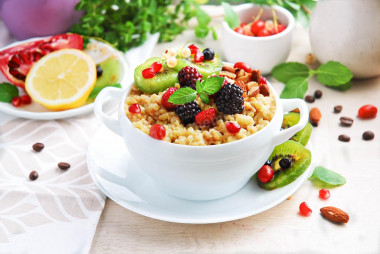
Put the hot porridge on a plate and serve it to the table with a glass of warm milk or a cup of tea. If desired, bulgur milk porridge can be decorated with fresh berries, dried fruits, any nuts (almonds, peanuts or walnuts). Bon appetit!
This porridge can be cooked on coconut or almond milk.
If desired, add raisins or finely chopped dried apricots.
If you like, you can add vanilla sugar (1 teaspoon).
Instead of sugar, you can use a sweetener that is not afraid of heat treatment.
Important! Cooking from bulgur is delicious, easy and varied will help the article "Bulgur: get to know each other better and cook boldly!"
How to choose the perfect pot for soup, porridge or pickling cucumbers read the article about pots.
Caloric content of the products possible in the composition of the dish
- Whole cow's milk - 68 kcal/100g
- Milk 3.5% fat content - 64 kcal/100g
- Milk 3.2% fat content - 60 kcal/100g
- Milk 1.5% fat content - 47 kcal/100g
- Concentrated milk 7.5% fat content - 140 kcal/100g
- Milk 2.5% fat content - 54 kcal/100g
- Granulated sugar - 398 kcal/100g
- Sugar - 398 kcal/100g
- Butter 82% - 734 kcal/100g
- Amateur unsalted butter - 709 kcal/100g
- Unsalted peasant butter - 661 kcal/100g
- Peasant salted butter - 652 kcal/100g
- Melted butter - 869 kcal/100g
- Bulgur - 342 kcal/100g
- Salt - 0 kcal/100g
